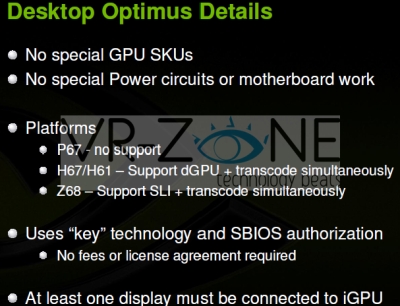NVIDIA is preparing to debut the desktop variant of its Optimus technology - known as Synergy - during the rapidly approaching Computex trade show.

Synergy is said to bear functional similarities to Virtu from LucidLogix - which as we already know, will be featuring in MSI's upcoming Intel Z68 line-up - and will dynamically, allow the system to switch between integrated and discrete graphics capabilities.
While LucidLogix's solution is billed as vendor-agnostic, Synergy is said to require the use of NVIDIA-powered discrete graphics and an Intel H61, H67 or Z68 platform. The solution is apparently free - without any license agreements or fees - and will use an authentication code embedded into the SBIOS.













